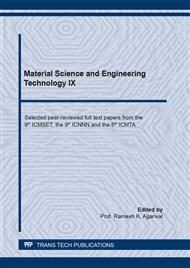p.91
p.97
p.103
p.111
p.121
p.127
p.135
p.141
p.147
Determining Optimum Carbon Nanotubes Content for Asphalt Mixture in Road Pavements
Abstract:
Although small amount of binder in asphalt concrete mixture may commonly range from 3.5 to 5.5% of total mixture as per many international specifications, it has a significant impact on the total cost of pavement construction. Therefore, this paper investigated the effects of five carbon nanotubes contents of 0.05%, 0.1%, 0.15%, 0.2%, 0.25% by asphalt weight as an additive material for binder on performance characteristics of asphalt mixtures. Performance properties of CNTs modified asphalt mixtures were investigated through the Marshall stability (MS) test, indirect tensile (IDT) test, static modulus (SM) test, wheel tracking (WT) test. The results indicated that asphalt mixtures with CNT modified binder can improve both the rutting performance, IDT strength and marshall stability of tested asphalt mixtures significantly at higher percentages of carbon nanotubes. However, the issue that should be considered is the construction cost of asphalt pavement. Based on the asphalt pavement structural analysis and construction cost, it can be concluded that an optimum CNT content of 0.1% by asphalt weight may be used as additive for asphalt binder in asphalt mixtures.
Info:
Periodical:
Pages:
121-126
Citation:
Online since:
March 2021
Authors:
Price:
Сopyright:
© 2021 Trans Tech Publications Ltd. All Rights Reserved
Share:
Citation:


